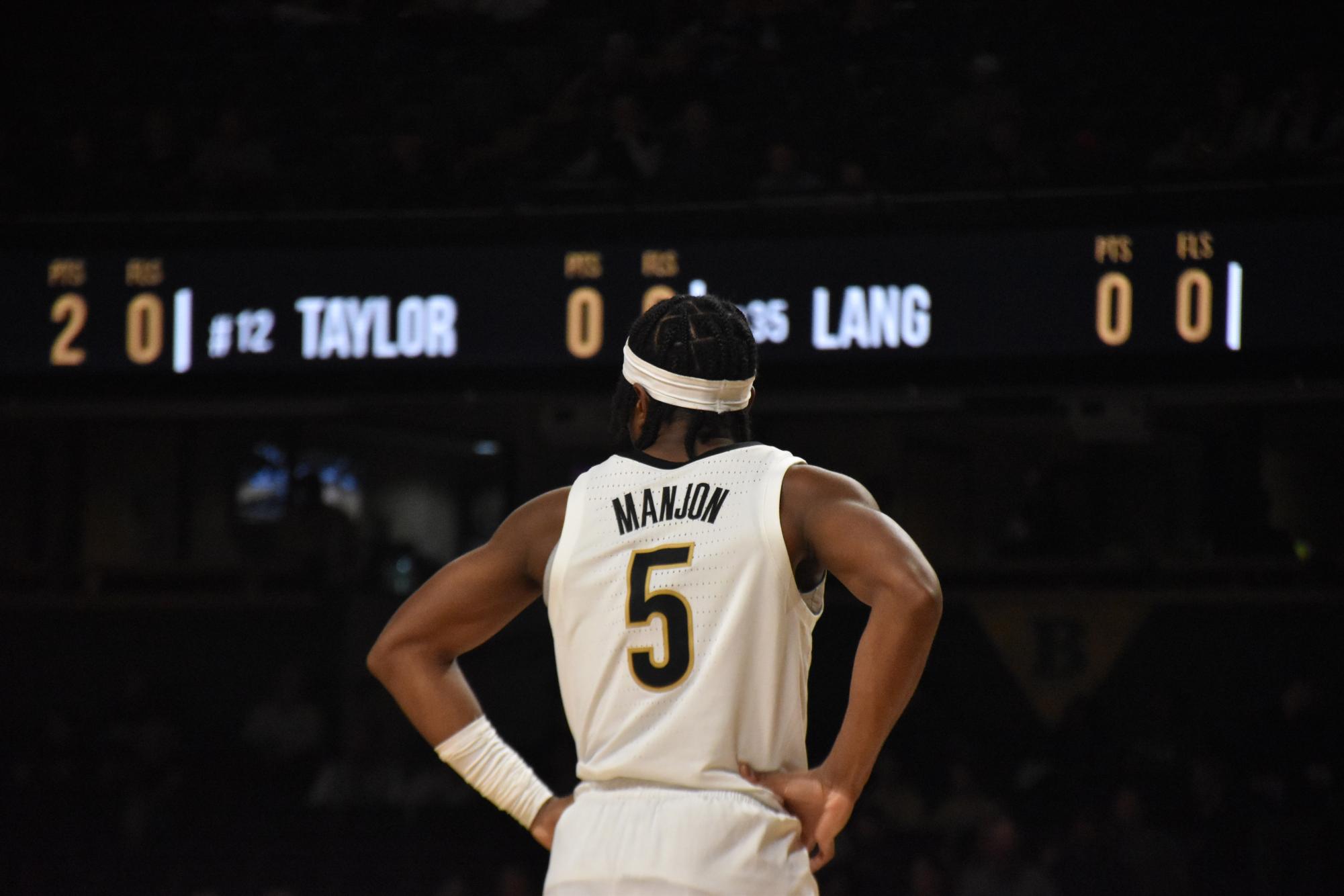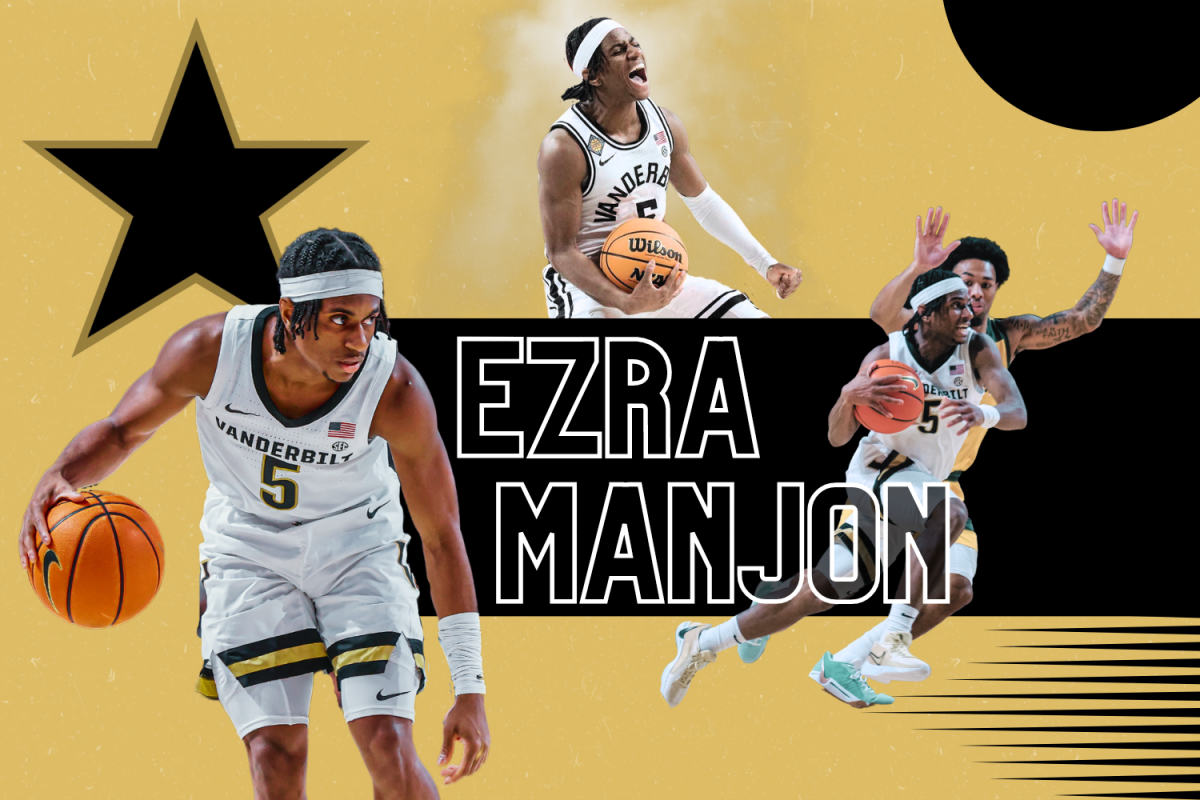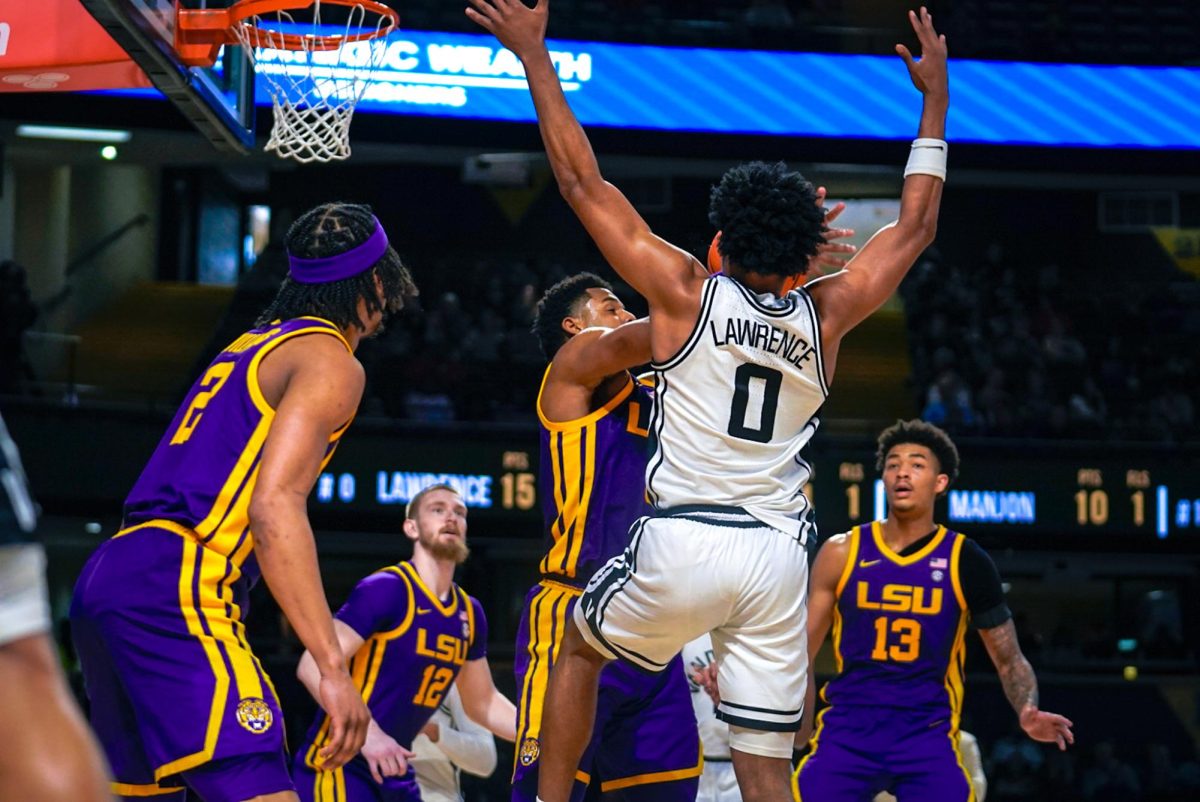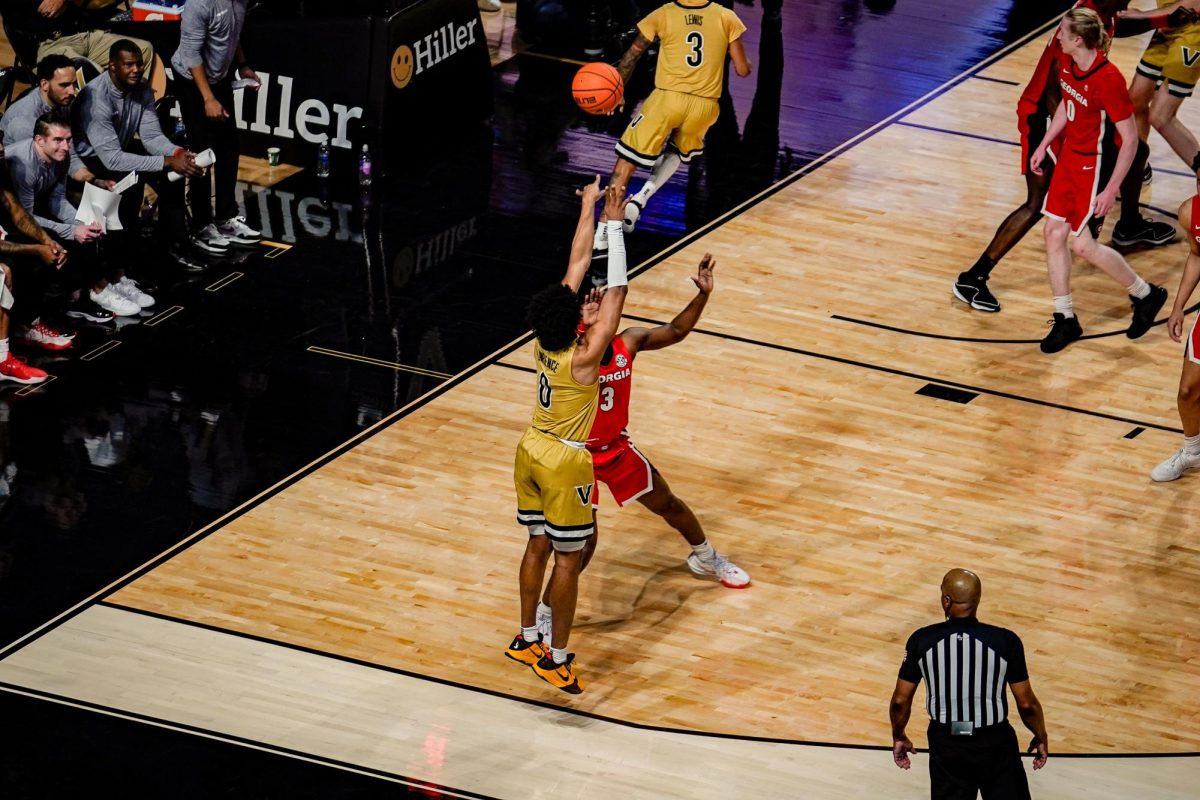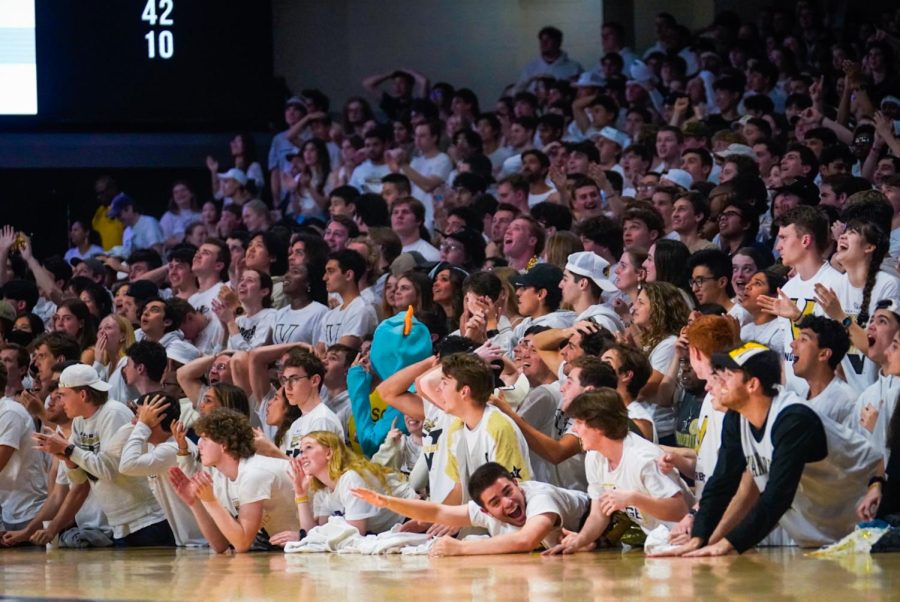There were justifiably high hopes for Vanderbilt Men’s Basketball going into this season. The Commodores were coming off of a 22-15 (11-7) record during the 2022-23 campaign that saw them tie for fourth place in the SEC. Their NCAA Tournament aspirations fell just short as they found themselves on the outside of the bubble, getting drawn as a No. 2 seed into the NIT instead. The season itself marked Vanderbilt’s best since 2016-17, which came under former head coach Bryce Drew.
Many were upset at Vanderbilt’s exclusion from the NCAA Tournament last year. The team had all of the intangibles necessary to earn a bid — a top-half finish in the SEC, a deep run in the conference tournament and a plethora of quadrant one wins over teams like Kentucky (twice), Tennessee and Arkansas. The one problem? The Commodores had some less-than-optimal home losses at the hands of non-Power Five teams in Southern Missouri and Grambling State. These losses destroyed the team’s NET rating, as it sat at No. 81, squarely outside the top 68 teams that make the tournament.
This year was supposed to be different, though. Superstar guard Tyrin Lawrence withdrew his name from the transfer portal, Ezra Manjon took a fifth year of eligibility and the Commodores brought in some key transfers in Evan Taylor, Tasos Kamateros and Ven Allen-Lubin. Not to mention the jumps that second-year players like Colin Smith, Paul Lewis and Lee Dort were supposed to make.
Head coach Jerry Stackhouse and his staff supposedly had learned from the mistakes during the non-conference slate last season. Not only had Vanderbilt scheduled easier matchups to start the year — Southern Missouri and Grambling State both ended up being better than expected, making the NIT and NCAA Tournament, respectively, but it also knew that it needed to try harder earlier on and win games by larger margins.
Or, so we thought.
A disastrous start to the season saw Vanderbilt drop its opener at home to Presbyterian College, a squad ranked 277th in the nation according to KenPom. The Commodores bounced back from that loss with wins over USC Upstate, UNC Greensboro and Central Arkansas. Still, none of the wins were particularly convincing, with the team’s average margin of victory across the three games sitting at just five points.
Biding time
It’s pretty clear that the Commodores are undermanned as of now, as Lawrence, Dort and Allen-Lubin are all out with injuries. Down three starters, Stackhouse has been forced to go to the bench early and often, with four freshmen (Jason Rivera-Torres, Carter Lang, JQ Roberts and Isaiah West) already logging more than 11 minutes per game.
While the freshmen have been productive at times and Stackhouse has a record for getting as many guys involved as possible early in the season, Vanderbilt ideally should be winning these softer matchups by more than a couple possessions. For Stackhouse, though, a win is a win is a win.
Stackhouse acknowledged that he expects all three projected starters to return for the Vegas showdown on Nov. 23 and 24. Perhaps his mentality is that Vanderbilt just needs to keep itself above water until it gets healthy.
The gravity that Lawerence — Vanderbilt’s presumed best player — holds within the offense cannot be understated. The respect that opposing defenses must give the lengthy guard opens up opportunities for Manjon and the rest of the Commodores in a massive way. Dort marks the only true center on Vanderbilt’s roster with previous playing experience, as Kamateros is more of a forward and Lang has played just four career games. The 6’8” Allen-Lubin is a Power Five transfer out of Notre Dame that should give Vanderbilt even more presence inside the paint.
As all three continue to mend, Vanderbilt will continue to bid time and rely on its entire roster to make plays and create sparks.
Filet Manjon
Manjon was left off of the preseason All-SEC teams at media day last month, and through four games this season, the California native seems determined to prove that that decision was a mistake. The 6-foot graduate, now in his second year donning the Black and Gold, is averaging a career-best 18.8 points and 4.8 rebounds, along with 4.0 assists per game. He has improved efficiency as well, with a shooting split of 47.6% from the field, 40.0% from 3-point range (a career-high) and 91.2% from free throw range (also a career-high).
He has been the brightest star of this Vanderbilt team so far, and it hasn’t just been through his dual-threat ability on offense. Manjon’s defensive game has been stout as well, as he’s averaging 1.8 steals per game, another career-best. His ability to match up against opposing teams’ best backcourt playmakers has been invaluable to the Commodores since he transferred from UC Davis.
Manjon’s explosiveness when serving as the Commodores’ facilitator has perhaps been his biggest strength. Every game, he displays his unfathomable agility through a first-step burst that is perhaps unrivaled in college basketball. This burst often forces defenders to collapse on him as he works toward the hoop, opening up his teammates from beyond the arc. While Vanderbilt hasn’t shot particularly well from downtown to begin the season (31.6%), Manjon has helped his teammates generate good shots, and, eventually, they’ll start converting at an efficient clip. Not to mention that Lawrence’s return will help with spacing even more.
Shrinking down
Vanderbilt experienced a massive identity shift last season once Liam Robbins went down with a season-ending leg injury. The Commodores still used backup center Quentin Millora-Brown plenty, but when they needed to, they went small. It might’ve made working on the glass a little bit more challenging than it was when the 7-foot Robbins was anchoring the paint, but it had its perks.
Vanderbilt has picked up right where it left off in terms of small ball. Millora-Brown transferred out, and Dort is still getting healthy. The only active center the Commodores have is Lang, and, while he’s shown flashes at times, he doesn’t quite have the experience to contend with some of the older big men that Vanderbilt has faced. Hence, the Commodores have opted for a more modern approach, running either Kamateros or Smith — who both stand at 6’8” — at the five.
Smith, whose 30.5 minutes per game is the most of any Commodore and nearly double his playtime last season, has been a force on the glass, averaging 9.5 rebounds per game. He has recorded double-doubles in each of his last two games with 11 boards in both. His athleticism allows him to crash in on offensive rebounds in a big way while also helping him take advantage on the offensive end. Simply put, bigger guys struggle to keep up with him, which has helped the sophomore get open looks from downtown all season.
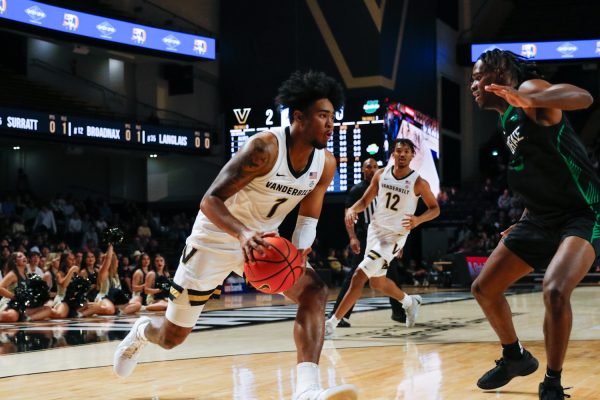
Kamateros has been valiant in his role as a pseudo-big man as well, averaging 9.0 points per game while shooting an even 50.0% from downtown. Similar to Smith, the Greek power forward is able to use his lack of size to his advantage on offense, popping out quickly after setting screens to get open looks. His biggest moment came during the Commodores’ come-from-behind victory over USC Upstate last weekend when he made four-of-five 3-pointers en route to a 21-point performance to pace all Vanderbilt scorers.
While this small ball orientation may be a little bit harder to pull off when the competition gets taller and tougher against teams like N.C. State and Boston College, it has worked well thus far.
Pacific time zone
Vanderbilt will have a chance to catch its breath before it travels to the West Coast later this week to compete in the Vegas Showdown against NC State at 9 p.m. CST on Thanksgiving Day. The Commodores will take on either BYU or Arizona State on Friday, depending on results from Thursday’s games. These games will mark Vanderbilt’s biggest challenge of the season. Can the Commodores stay afloat, or will they inevitably sink further down the NET rankings?



